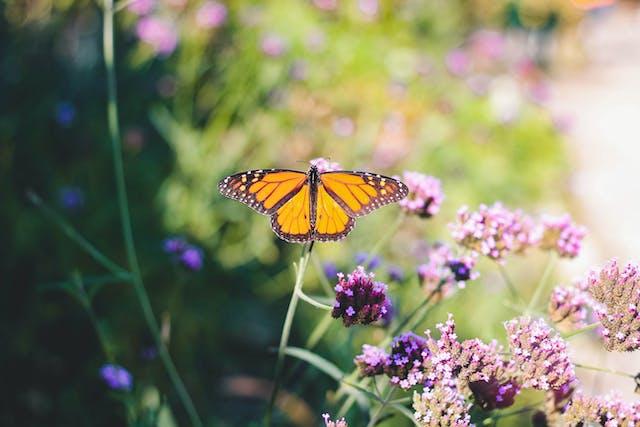
Introduction
Butterflies, bees, and other pollinators play a crucial role in our ecosystem by helping plants reproduce. Creating a butterfly and pollinator garden not only provides a beautiful and vibrant space but also supports the survival of these beneficial insects. In this article, we will provide you with tips on how to create a haven for butterflies and pollinators in your garden.1. Plant Nectar-Rich Flowers
- Choose a variety of flowering plants that provide nectar for butterflies and other pollinators. Opt for native plants whenever possible, as they have evolved alongside local insects and are well-suited to their needs. Some examples of nectar-rich flowers include coneflowers, milkweed, lavender, bee balm, and salvia.- Plant flowers with different bloom times to ensure a continuous nectar supply throughout the growing season. This will attract and support a diverse range of butterflies and pollinators.
- Group flowers of the same species together, as this makes it easier for pollinators to find and access the nectar. Planting in clusters also creates visual impact and makes it more likely for pollinators to visit.
2. Provide Host Plants
- Butterflies have specific host plants on which they lay their eggs, and their caterpillars feed exclusively on these plants. Research which butterfly species are native to your area and provide their specific host plants. For example, monarch butterflies lay their eggs on milkweed plants, while swallowtails prefer plants like parsley or dill.- Be mindful that host plants may get eaten by caterpillars, so be prepared to accept some leaf damage as part of the natural process. This damage is a sign of a healthy ecosystem and essential for the life cycle of butterflies.
3. Create Shelter and Habitat
- Include a variety of plants with different heights and structures to provide shelter and resting places for butterflies and other beneficial insects. This can include shrubs, tall grasses, and even small trees. These plants offer protection from wind, predators, and extreme temperatures.- Incorporate features like rock piles or log piles to provide hiding spots and basking areas for butterflies and insects. These elements also contribute to the overall aesthetics of your garden.
4. Avoid Pesticides
- Minimize or eliminate the use of pesticides in your butterfly and pollinator garden. Pesticides can be harmful to beneficial insects and disrupt the delicate balance of your ecosystem. Instead, focus on natural pest control methods, like attracting beneficial insects or handpicking pests.- If pest problems persist, consider using organic or biological alternatives that target specific pests while sparing beneficial insects.
5. Provide Water Sources
- Create a water source, such as a shallow dish or birdbath, in your garden. Butterflies and pollinators need water for hydration, especially during hot and dry periods. Add a few stones or pebbles to provide landing spots and prevent drowning.- Ensure the water source is clean and replenished regularly to avoid the risk of disease.
Conclusion
Creating a butterfly and pollinator garden is not only visually appealing but also beneficial for the environment. By planting nectar-rich flowers, providing host plants, creating shelter and habitat, avoiding pesticides, and offering water sources, you can create a haven for beneficial insects in your garden. Embrace the beauty and wonder of butterflies and pollinators while contributing to their conservation and the health of our planet.
Article
Be the first comment
Elite Article














